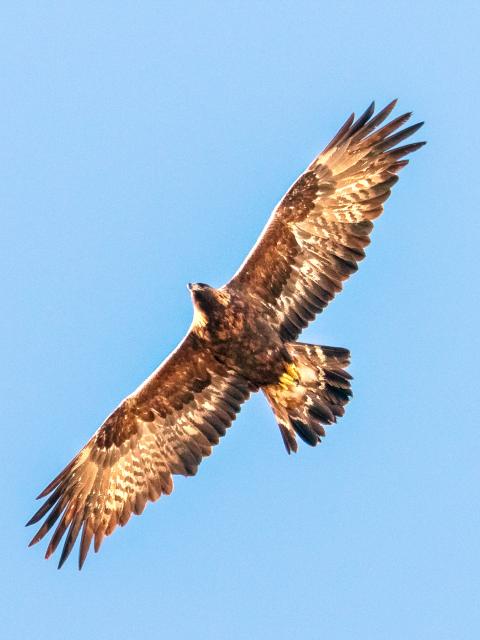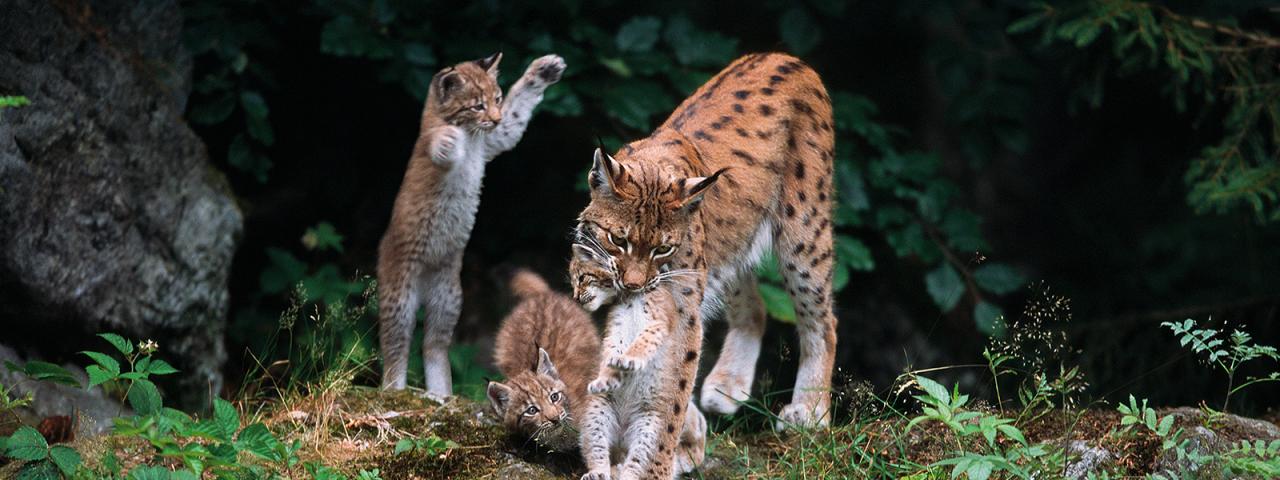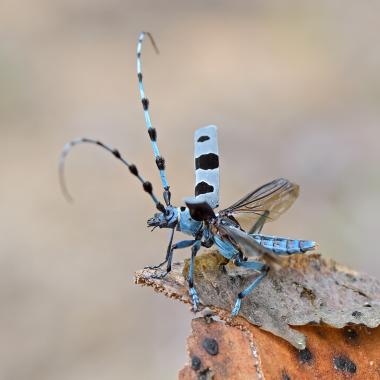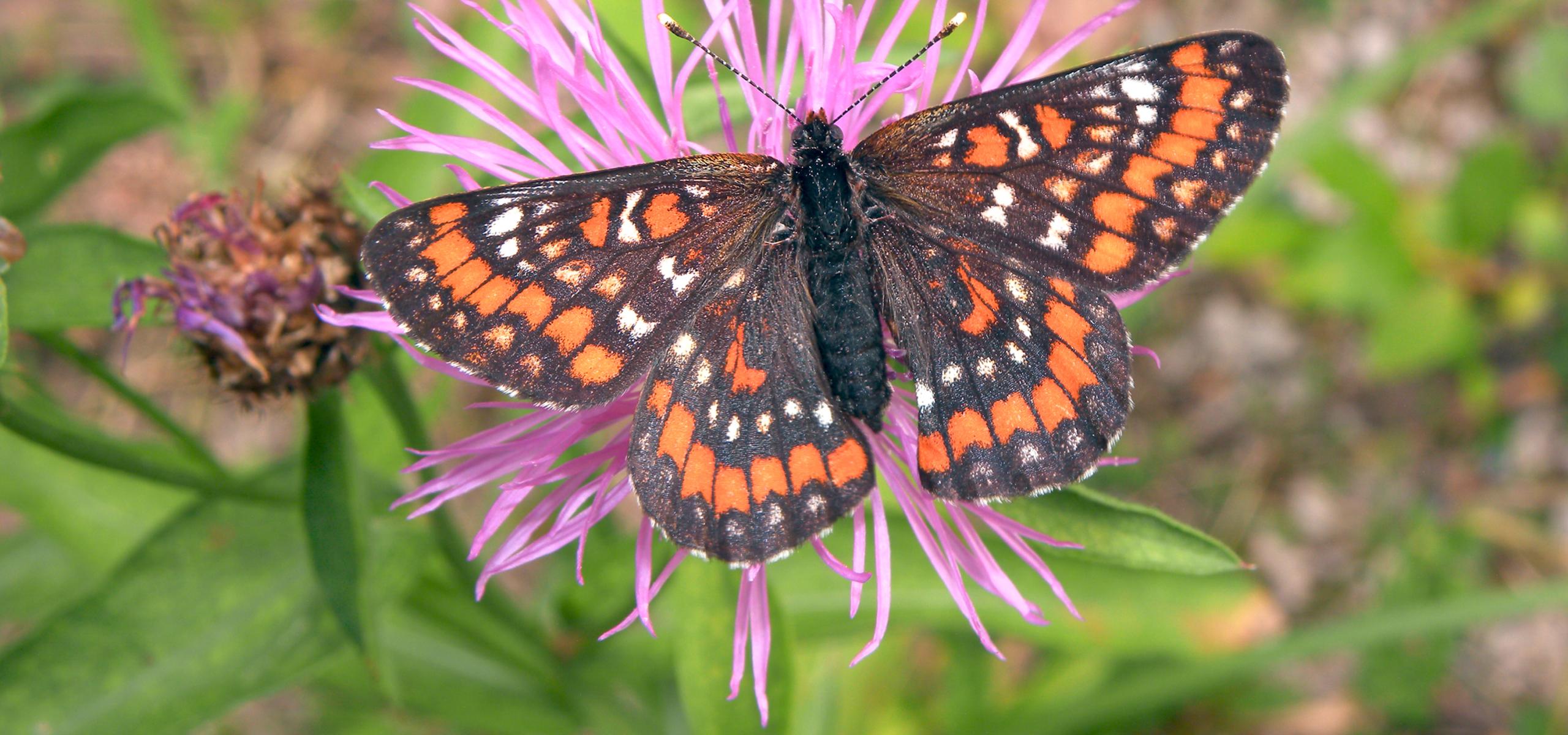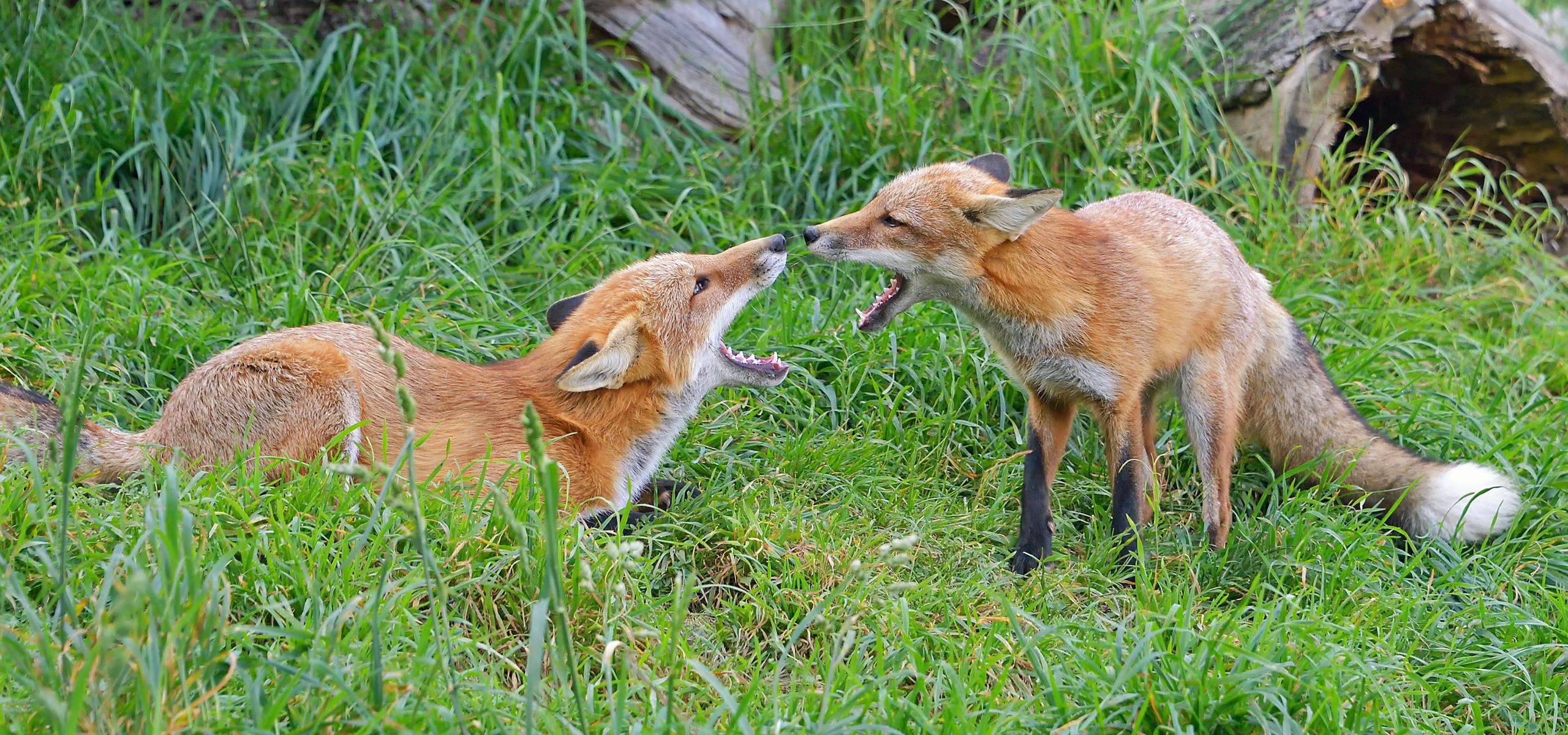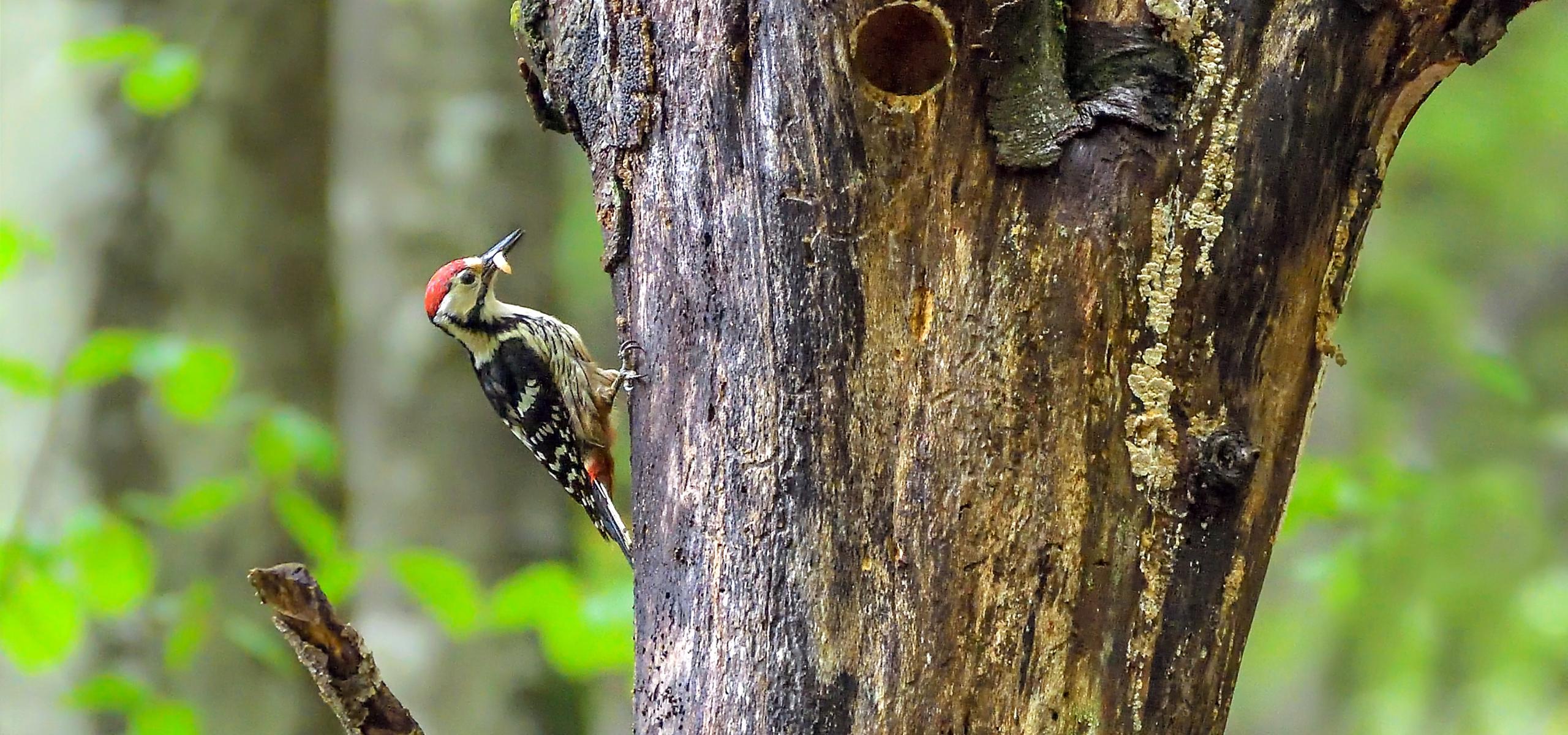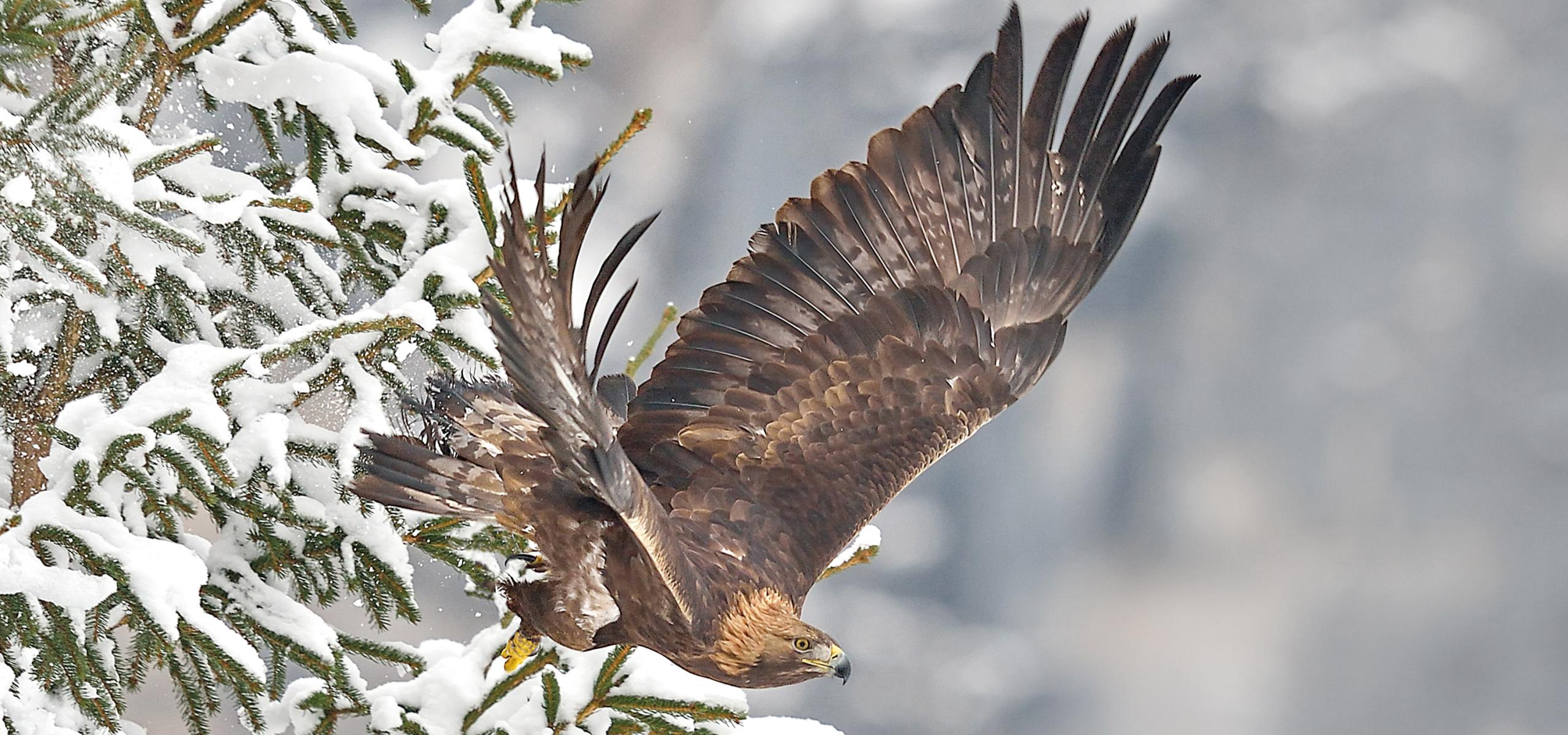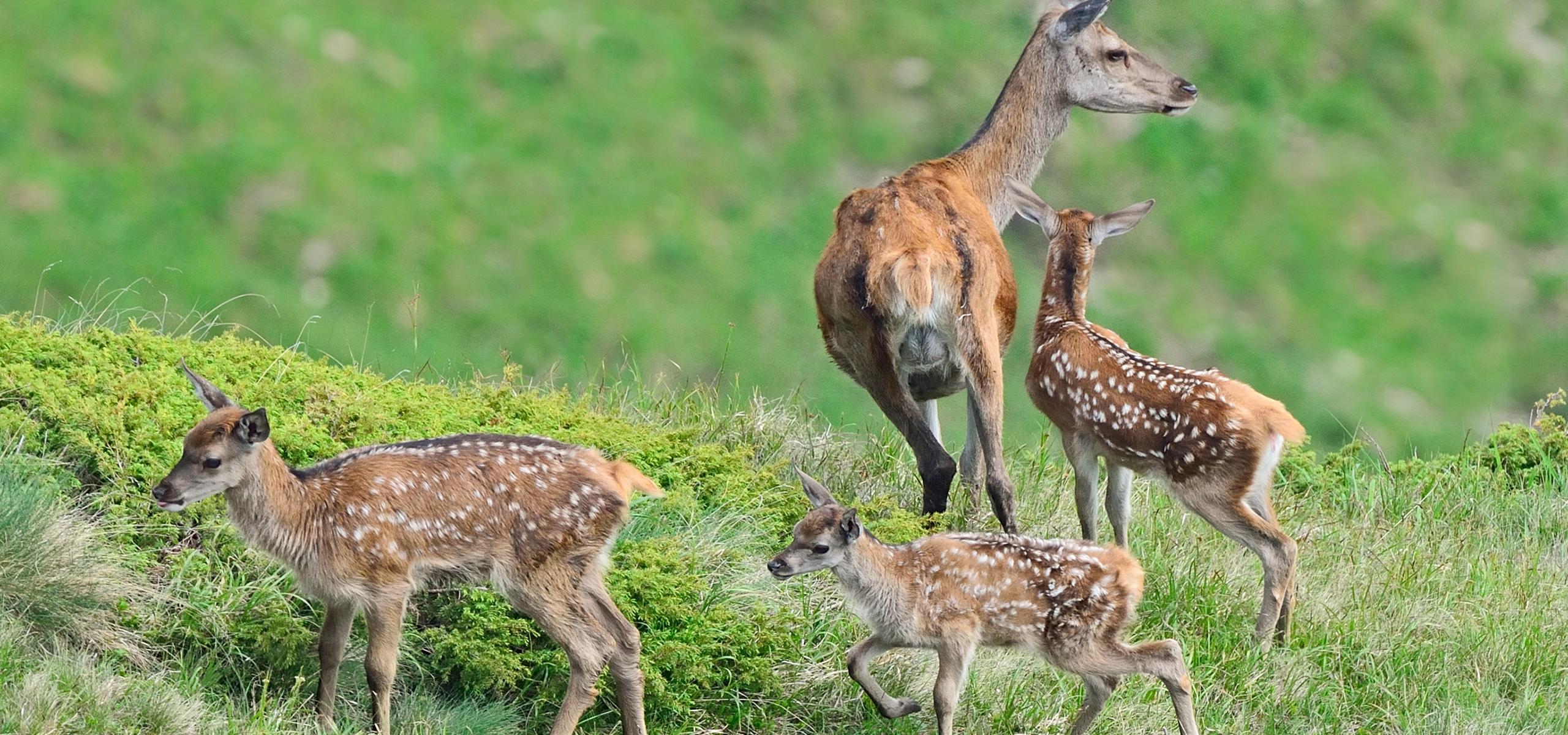Latin name: Aquila chrysaetos
Observation tip: In the early afternoon hours, they like to use the available thermals to soar. Common ravens often "warn" the eagle with a loud "rob rob rob" and at the same time try to fly over it by spiraling upwards so that they can then "tease" it with mock attacks from above.
The golden eagle is the largest breeding bird of prey in the Northern Limestone Alps. The Kalkalpen National Park is home to three territories (breeding pairs). In recent years, small groups of young birds have been observed flying in.
The body length measures 80 to 93 cm, the wingspan 190 to 225 cm. Adult birds are very dark in color, the back of the head is golden brown. Young birds have a broad white tail base and a conspicuous white field in the arm and hand wings. With increasing age, the extent of these white plumage areas decreases and the birds are not fully colored and sexually mature until they are about five years old.
In Central Europe, the golden eagle used to be found in the lowlands. Today, it is restricted to the Alpine arc due to the once intensive persecution of birds of prey. Thanks to strict conservation measures, populations in the Alps have recovered well in recent years and the population is now almost complete again. Golden eagles need open, treeless areas with a high supply of medium-sized prey weighing up to around five kilograms for stalking. The preferred hunting grounds are above the tree line. Alpine pastures, windthrow and slash-and-burn areas offer suitable hunting grounds within the forest stage. Since the marmot is absent in the Northern Limestone Alps, the food base here is poorer, but also more varied. Prey includes adders, small birds, small mammals, capercaillie and chamois fawns. The regular capture of young foxes is presumably of ecological relevance. Carrion plays a decisive role, especially in winter. The nests in the Northern Limestone Alps are all located on rock faces, sometimes also in tiny forest cliffs, while tree nests are currently unknown. For reasons of prey transportation, golden eagles breed lower than their preferred hunting grounds whenever possible.
The total population in Upper Austria is estimated at 20 to 30 pairs.
Status, endangerment and protection
Status Kalkalpen National Park: breeding bird, not common
Status Upper Austria (2005): very rare breeding bird
Red List Austria (2005): Endangered
Red List Upper Austria (2003): endangered
Population in Europe: (2003) rare throughout Europe
Conservation responsibility Austria: strongly responsible
Need for action for Austria: not specifically given
EU Birds Directive: Annex I
Hunting Act Upper Austria: protected all year round
